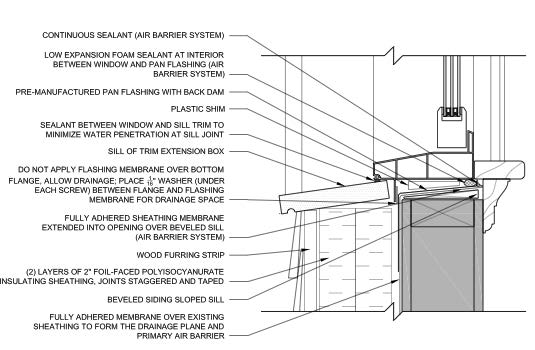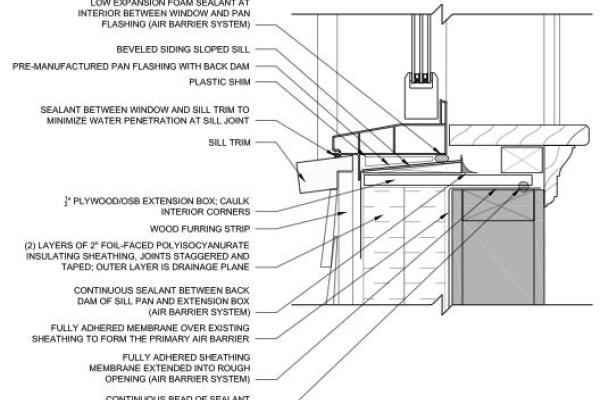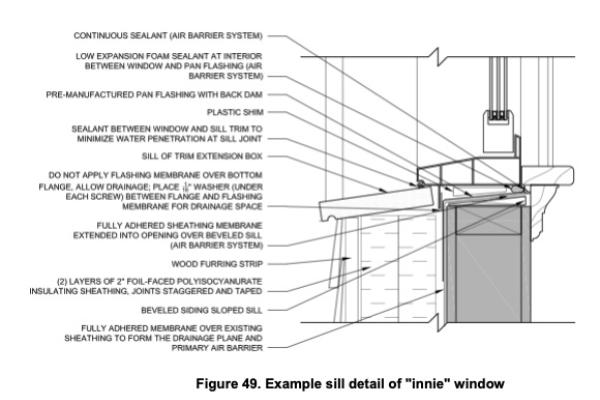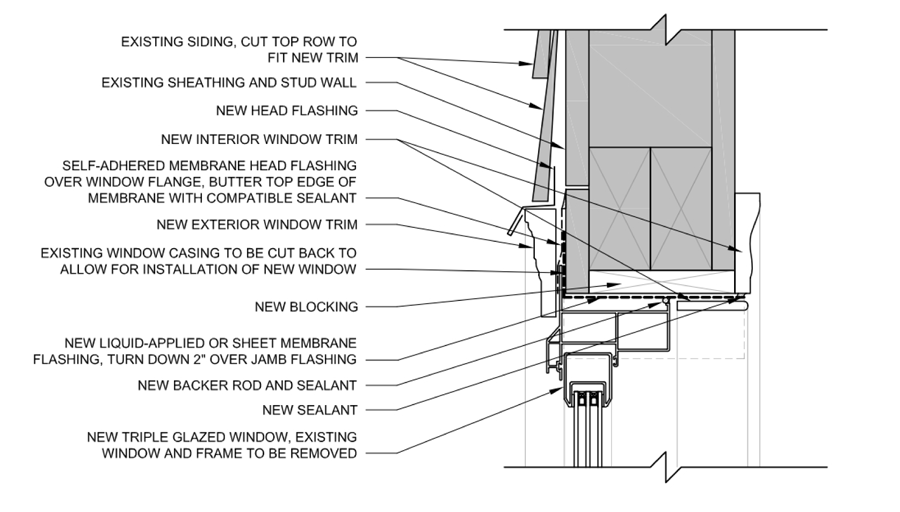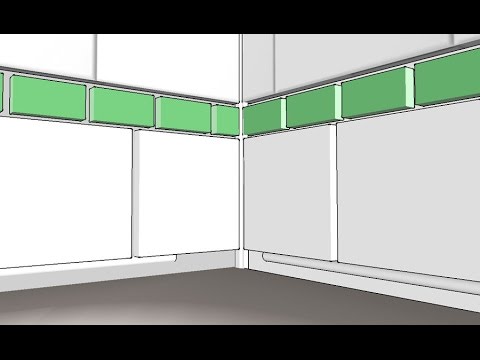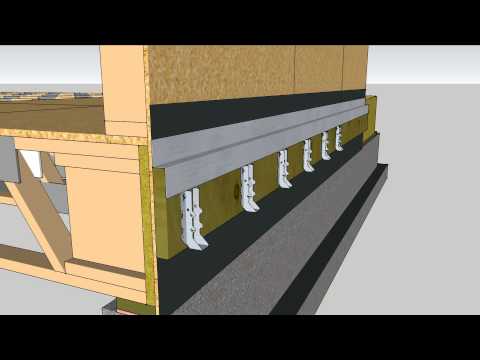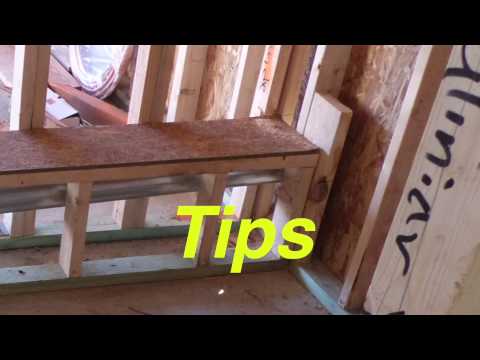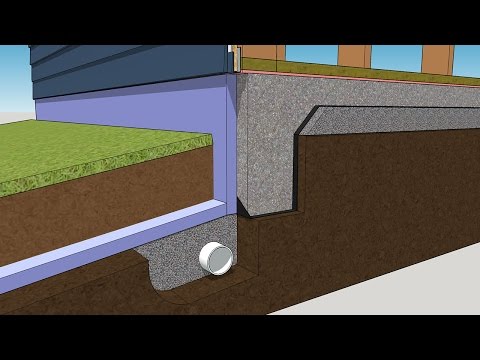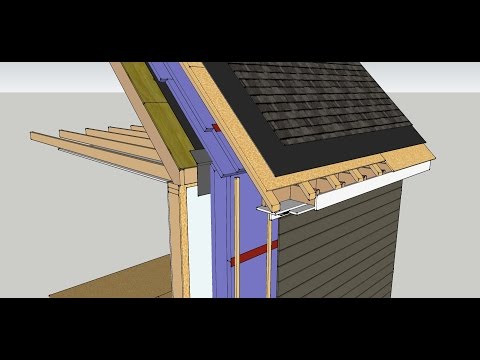The WRB is a BFD when choosing where to put the window
These architectural details are from Measure Guideline: Wood Window Repair, Rehabilitation, and Replacement by Peter Baker, PE.
They show how to integrate a new window into an old wall without introducing new water leaks or air leaks. In this case, four inches of foam was added to the outside; these details show how to set a window to the inside or the outside (innie or outie).
Either one is fine and each has its own charm.
- An innie is easier to incorporate into an existing drainage plane behind the exterior insulation
- An outie is easier to incorporate into a drainage plane in front of the exterior insulation.
So, the WRB is pretty much the decider.
Other considerations:
- Innies set the windows into a recess, which protects windows from the weather.
- Outies add deep window sills—great for plant shelves, cat perches, and bowling trophies.
What all of these details have in common is that there is a continuous air barrier, a continuous water barrier, and a continuous thermal barrier for the wall.
Don't know what that is? Take the Pen Test
Sources:
- Building America Solutions Center's Complete Window Replacement Guide (16 pages, public domain)
- NREL's Measure Guideline on Wood Window Repair and Replacement by Peter Baker at Building Science Corporation (94 pages, public domain).
<code>
2012 IRC: N1102.3.6 (R402.3.6) Replacement fenestration
2012 IECC: R402.3 Fenestration (Prescriptive)
</code>
